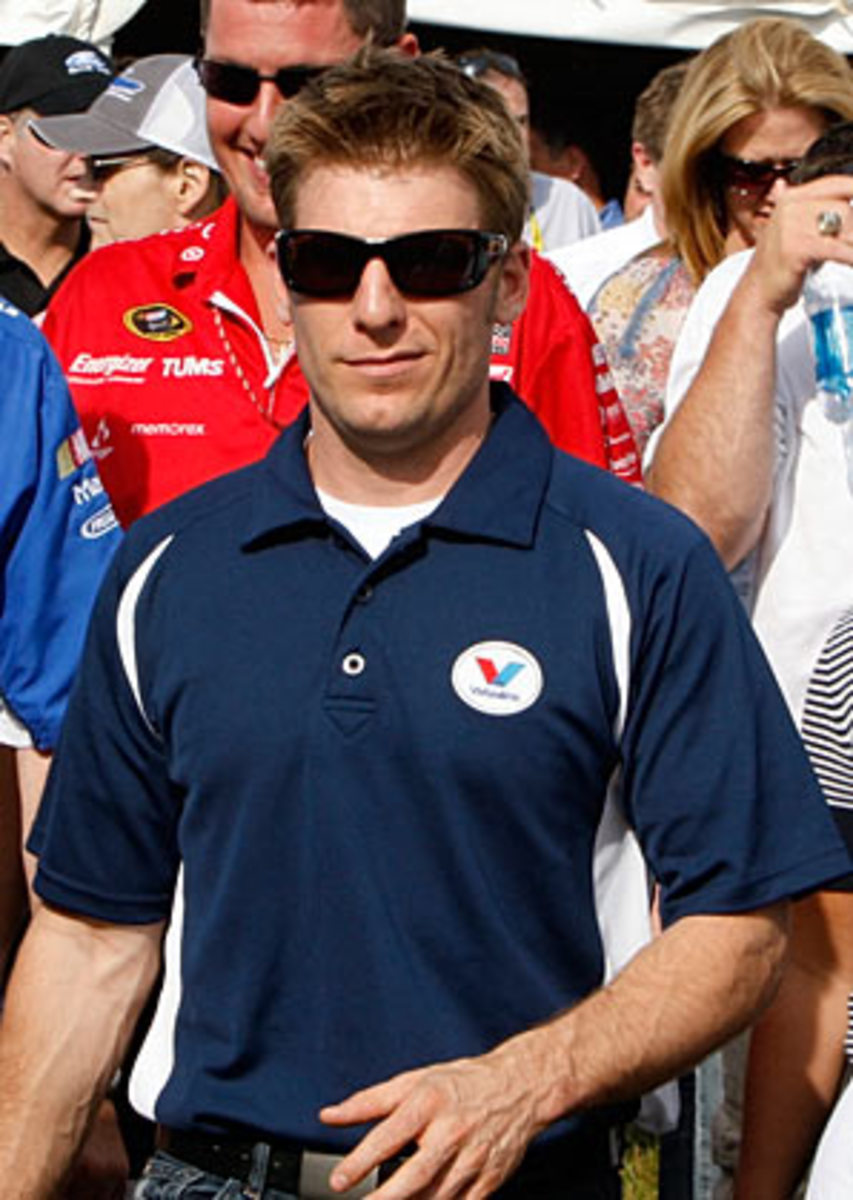You, too, can race a NASCAR engine; more trade show notes
Those who make their living with race cars are spread to the four winds in the short stretch of quiet that passes for an offseason, but they usually find themselves in a car, under a hood or at a track anyway. They just don't get paid for it. Sometimes they're drawn back together by anticipation of racing's blurry circle starting all over again.
The Performance Racing Industry trade show -- 700,000 square feet of horsepower, parts, pieces and periphery -- made for one such beacon in early December. A race car could literally have been built from the O rings-up just by visiting the right combination of 1,100 vendors spread over the zip code-worthy expanse of the Orange County Convention Center in Orlando, Fla.
You never know who you'll run into there. It helps if you're not actually looking for them, because actually trying to find someone is nearly impossible. But three familiar faces made their way through the offseason in different ways.
Jamie McMurray was buzzing around the paddock tent in the east parking lot, lapping the tiny area jammed with go-karts and the curious while poking his head into each cubicle for a snoop.
"Slicks. I'm telling you," he said to a friend assisting his effort in a celebrity karting challenge that lured drivers from various high-level professional regimens. "Everyone else is taking off the rain tires."
McMurray grew up as a world and national champion karter and never lost the love of it even after he and a generation of potential open wheel drivers decided they wanted to be the next Jeff Gordon. With the likes of fellow NASCAR drivers and heralded karters A.J. Allmendinger and Scott Speed, Ryan Hunter-Reay and Justin Wilson of the Izod IndyCar Series, and sundry other pros in the race, anxiety and competitive energy seemed as high -- or at least more noticeable -- than on a NASCAR race day. But there was also an uncommon chance for camaraderie.
"This is what I do in my spare time," McMurray said. "I come down to the shop and race go-karts when I get a weekend off. It's fun to come here because there's Formula One guys, there's drag racing guys and you get to meet them. It's one thing to sit and sign autographs or shake their hand, but we do the drivers meeting with them and laugh and build a friendship where you actually exchange cellphone numbers. Gary Carlton is right next to me and he's like one of the best karters in America. He's become my email buddy and my text buddy."
Richie Gilmore was all but throwing in a toaster as he told a man in a black Harley-Davidson shirt how good he would look sitting behind a particular engine. There was an odd used car lot feel in this large partitioned space across the walkway from the empanada stand. In essence it was. Gilmore, a man whose engine-building expertise once provided the beating heart for Dale Earnhardt Inc., including its former utter domination of restrictor plate racing, was the salesman.
It's not an offseason job in tough times, but just another part of the business for Earnhardt Childress Racing Engines, a union of the DEI and Richard Childress Racing efforts. While the company still deploys most of its resources to provide Chevrolet power plants for Childress, Earnhardt Ganassi and various leasees, sales to grassroots racers and hopefuls in the Camping World East developmental series has become a third of its business, Gilmore said. Next target: road racers and trophy trucks.
Reallocating some engine-builders also prevented layoffs, Gilmore said. And with "tire-kickers" becoming more able and interested in buying, Gilmore was shaking hands and conjuring possibilities for wide-eyed potential customers about what an engine built in a NASCAR race shop could do on the local dirt track.
"It's the same hands on the engines," he said. "I think that's a big thing we can offer, the NASCAR-level, Cup-level technology is going into these same engines. We can offer that to the guys who race Friday and Saturday night in the dirt. The dirt modified guys can buy the highest technology."
Now, what's it going to take to get you behind this manifold?
Buzzie Reutimann was standing next to the Bert Transmissions booth. He had one ear to a sales rep who was explaining how to install one and the other to his cellphone as he tried to relay the information to his son, Sprint Cup driver David Reutimann.
Buzzie, whose short track exploits and affability have made him a fan favorite and legend during the last four decades, was the cliché kid (albeit a 68-year-old one) in the candy store, closing his cellphone to marvel with a passerby at all the toys available for sale. He'd just begun to explain that David was back to working on his new car when a friend tapped him on the shoulder. The sales rep thought he had an answer about the instruction manual.
"Gotta go!" Reutimann beamed.






